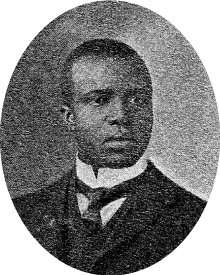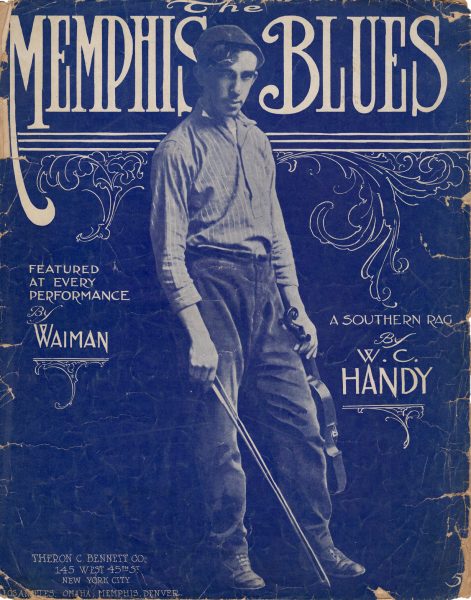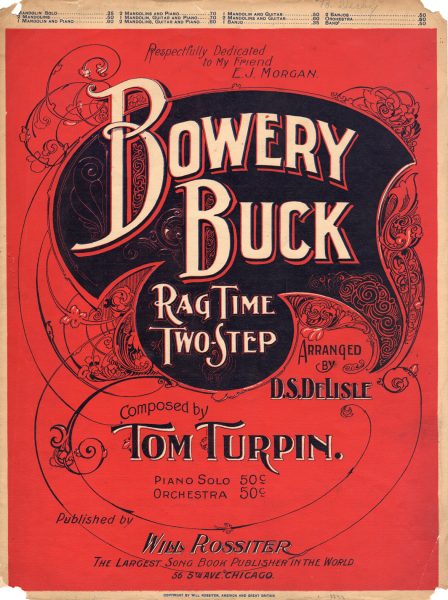WHAT IS RAGTIME?
Ragtime is a true American style of music usually featuring a syncopated melody over a marching beat. Syncopation occurs when the accented note in a measure falls between the main beats. This creates a unique offset sound that, when it first became popular, simultaneously excited and offended many people. Originally seen as African-American music, lowly in its day, ragtime’s roots are found in the mixing of African rhythms and European musical structure and motifs. Syncopated songs and mainly syncopated marches were popularly referred to as “rags.” Below is an example of an instrumental rag, Iliona, published in 1907.
While at first ragtime appeared to be a uniquely African-American music, soon it grew to become simply America’s music. Ragtime varied from place to place with different distinct styles developing across the nation. Of the countless thousands of songs and rags published, pieces written by three composers in particular are considered to be what many call “classic ragtime,” a term coined by the music publisher John Stillwell Stark. Ragtime’s big three are Scott Joplin, James Sylvester Scott, and Joseph Francis Lamb. Scott Joplin is considered the “King of Ragtime Writers” and penned such classics as The Entertainer and Maple Leaf Rag.
RAGTIME’S BIG THREE
1885 – 1938
JAMES SCOTT

1867/68 – 1917
SCOTT JOPLIN

1887 – 1960
JOSEPH LAMB

MORE ABOUT
RAGTIME’S LEGACY
Born in the second half of the 19th century, Ragtime’s unique blending of African rhythms with European classical harmonies and music traditions created a new kind of music as energetic and colorful as the young nation that bore it. The precise origins of the term “ragtime” are hard to pin down. Even in its own time, ragtime’s origins were obscure and even its spelling saw variation in examples such as “rag-time” and “rag time”, both of which were correct. One thing that people do agree on is that it was born in America, on plantations and in the hands of itinerant musicians. For those first few decades, ragtime continued to be seen as African-American music or as generally low culture. Nearing the end of the century, ragtime gained greater national exposure after being played at Chicago’s 1893 World’s Columbian Exposition.
What makes ragtime unique is how prominently it utilized syncopation. When music is syncopated, its accented notes fall between the main beats. This creates an interesting rhythmic texture that was almost unheard of to 19th-century westerners. At the time this rhythm was so revolutionary that most of the musical establishment and high society vocally opposed the music. Time was on the side of progress, however, and ragtime grew ever more popular with the masses. By the turn of the twentieth century, ragtime fever was on its way to the top.
The ragtime era (approximately 1897-1917) saw a lot of change in the way the world wrote, published, and enjoyed music; the music recording industry was in its infant stages, local publishers were being dominated by larger Tin Pan Alley companies, and new genres of music were coming to prominence. Blues and jazz were originally considered ragtime, but soon found their own identities. For a brief transitional period, the terms ragtime and jazz were sometimes used interchangeably. Swing, stride, and novelty also began their evolution around this time. World War 1 brought with it the end of ragtime’s optimistic and cheerful hold on popular music as tastes turned towards the newer, more grounded jazz.
Ragtime’s impact and influence on modern music is inescapable. Powerful rhythms, energetic syncopations, and risqué lyrics were here to stay. Ragtime also saw the relative acceptance of African-American influence on pop culture at a time when racism was commonplace. For a nation filled with peoples and customs from all over the world, ragtime became America’s own native music.






